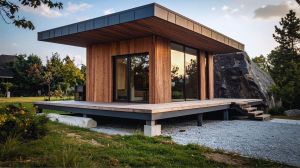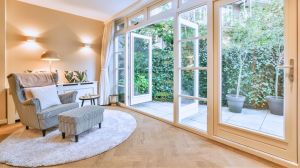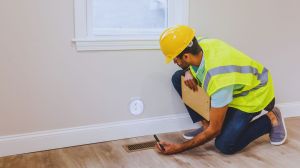The “Perfect” House Trap: Why Compromise is Part of Buying
Buying a home often turns into a checklist chase: granite countertops, the right ZIP code, a home office and space for everything. But holding out for perfection can lead to higher costs, limited options and missed opportunities. The truth is, some so-called “must-haves” are more about trend than need. In reality, knowing where to flex gives you more control, better value, and a smoother buying a house process. Here’s a breakdown of home features that might seem non-negotiable and why it’s perfectly fine to compromise on them.
The Ideal Location Isn’t Always the Smartest One
Chasing a trendy ZIP code can shrink your options and inflate your costs. Many great homes sit just outside the “perfect” area with more space, better value, and room to grow. Instead of focusing on status, look for areas with solid access to daily essentials, lower property taxes, and long-term resale potential. You may also face less competition in these areas, which gives you more negotiating power. If you’re buying a house for the first time, it’s worth focusing on function over prestige. Plus, smaller towns and fringe neighborhoods often have better community feel and local support.
A Kitchen Without Quartz Can Still Work Just Fine
An “impressive” kitchen isn’t always the wisest place to anchor your decision. If the layout is functional and the bones are good, you can update surfaces, appliances, and lighting over time for far less than the markup you’d pay upfront. Prioritize a good workflow between sink, stove, and fridge. Natural light and ventilation matter more than marble counters on day one. Avoid overpaying for finishes that don’t add much to everyday cooking. One of the best questions to ask when buying a house is whether updates like these can be done later without major disruption. Focus instead on durable cabinets, clean ventilation, and space for storage or meal prep.
Outdated Bathrooms Are Manageable (and Fixable)
You don’t need a spa-style bath from the start. As long as the plumbing is solid and there’s no water damage, cosmetic updates can wait. Many remodels are more satisfying when done to your taste over time. Look for layouts that can adapt. Adding a second sink or expanding a shower later is easier (and cheaper) than redoing cramped plumbing. A dated bathroom that functions well can serve you for years. This is especially true if you’re buying a house for the first time and working within a tighter budget. Reserve your budget for upgrades that impact comfort and utility, not just aesthetics.
A Primary Suite Doesn’t Need a Wow Factor
Don’t let a flashy primary suite override more practical choices. You’ll likely spend more time sleeping than soaking in a tub. Quiet, privacy, and good natural light matter far more than double vanities or oversized closets. Want to upgrade later? Start with a comfortable layout, then add blackout curtains, layered lighting, and storage solutions on your own terms. One of the common questions to ask when buying a house is whether the bedroom setup supports comfort and flexibility.
Storage Problems Can Be Solved Creatively
A home without walk-in closets or a three-car garage might seem like a limitation, but it’s rarely a dealbreaker. Vertical shelving, under-bed bins, modular racks, and attic storage can do the job just fine. Even renting a small storage unit for a transitional period is cheaper than overpaying for square footage you don’t really need. Most people don’t use all the space they have, or they just don’t organize it well. Make use of wall space, stackable bins, and underutilized areas like behind doors or under stairs. This can be a key point if you’re buying a house with a growing household in mind.
Home Offices Don’t Have to Be Separate Rooms
The “perfect” work-from-home setup doesn’t need its own four walls. Many people thrive with compact workstations in corners, guest rooms, or even closets. What matters is light, quiet, and a decent chair. Noise-canceling headphones, portable dividers, and desk placement can all turn a small space into a productive one without giving up a whole room. A multipurpose space can give you flexibility if your remote schedule changes later. If you’re buying a house for the first time, look at how flexible the floor plan is for hybrid use.
Built-In Smart Tech Isn’t a Must-Have
It’s easy to get dazzled by pre-installed smart home systems, but most can be added yourself, often at a lower cost and with better compatibility. You can install smart lights, thermostats, and security devices in a weekend. What’s more important is checking Wi-Fi coverage, outlet placement, and your comfort with managing devices on your own timeline. Many new buyers end up replacing or ignoring built-in tech that’s outdated or over-complicated. One of the practical questions to ask when buying a house is how much built-in tech actually adds to function, not just appeal.
Your Home Gym Might Be a Corner, Not a Room
A dedicated gym sounds nice, but most routines don’t require an entire space. A yoga mat, foldable bench, or compact treadmill in the corner of a bedroom or garage works for the majority of people. If your habits evolve, you’ll know exactly what kind of space you truly need to dedicate. Prioritize ventilation and flooring over square footage. A mirror, some natural light, and a storage shelf can turn a small area into a highly functional workout zone.
Unfinished Basements and Attics Offer Room to Grow
A finished basement or attic can look attractive, but don’t overlook the potential of an unfinished one. If it’s dry, accessible, and has decent ceiling height, you’ve got long-term expansion space. Paying less now and building later can save thousands and yield better results. These areas also allow you to tailor the space to future needs like a rental unit, media room, or additional bedroom. Always check for structural integrity and zoning rules before buying a house with renovation in mind.
You Don’t Need a Full-Time Guest Room
If you only host a few nights a year, dedicating an entire room doesn’t make sense. A Murphy bed, sofa sleeper, or even a high-end air mattress can handle occasional visitors without tying up valuable space. Consider a flexible room that works as a home office, hobby area, or reading nook the rest of the time. It’s a better use of square footage for your daily life. For those buying a house for the first time, multi-use rooms often make the most sense for evolving needs.
At REMAX, we focus on what truly matters to you, not just the perfect look, but the right fit. Let our experienced agents help you find a home that works for your lifestyle, budget, and long-term goals. Ask the right questions to ask when buying a house, and you’ll be more prepared to choose well.









